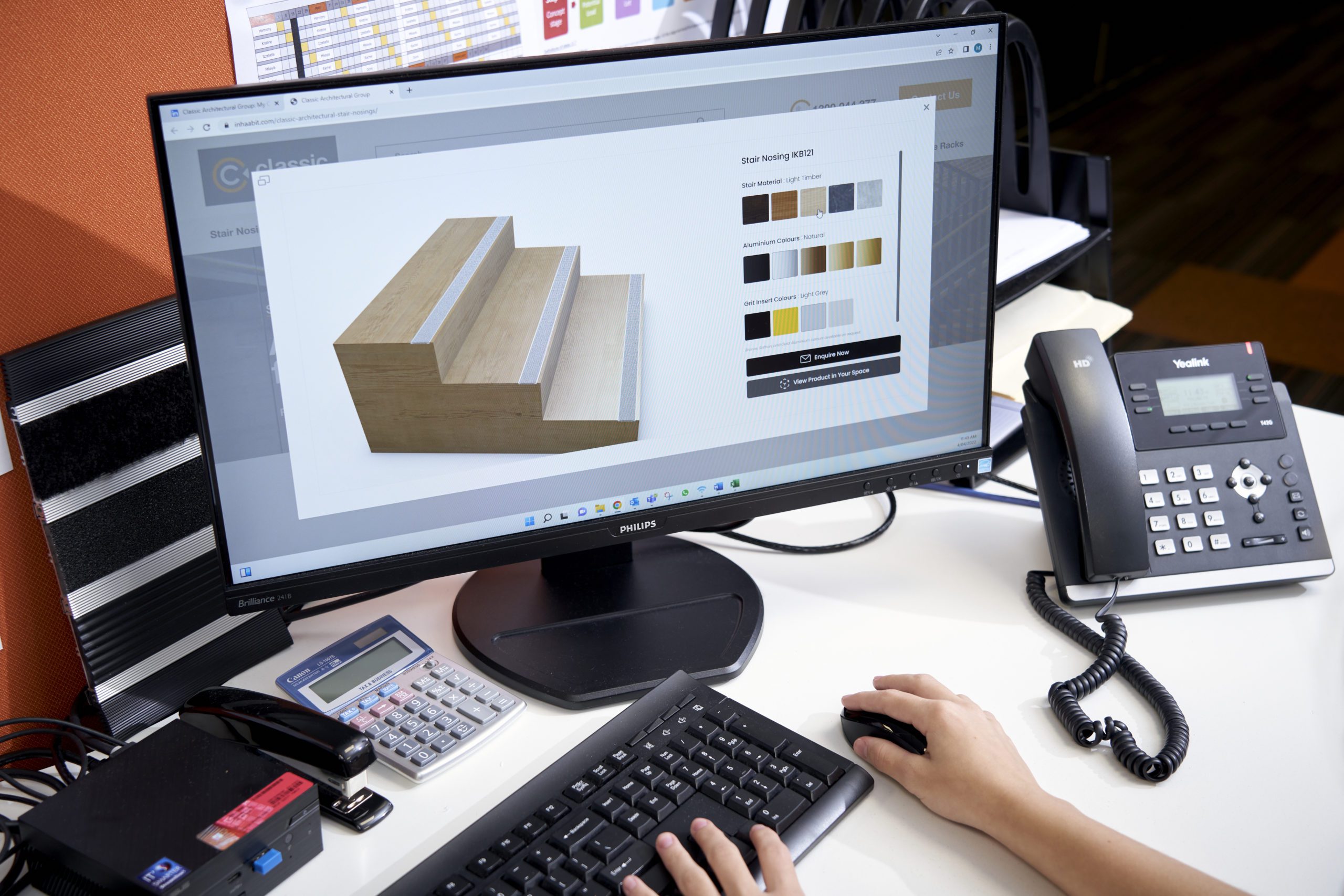Constructing and maintaining a safe and healthy workplace is paramount to prevent injuries and accidents occurring. This includes the correct specification and installation of stair nosings, tactile indicators and entrance matting.
Stair Nosing
Stair nosings are problem solvers and problem preventers. Since the nose of a step is where people put their feet and weight on the stair, it is the part that tends to wear out first, resulting in the risk of slips and falls for people using the stairs. With stair nosings, the problem of worn stairs can be prevented.
So what are stair nosings? Stair nosings are profiled strips of material, commonly aluminium, that are fitted on the edge of steps to assist in providing an anti-slip surface.
Office complexes get a tremendous amount of pedestrian traffic each day so building owners need to take every possible precaution to ensure the safety of these users. Installing safety and visibility-enhancing aids such as stair nosings is the best way to fulfil this need while adding beauty and character to the building’s décor.
The simple act of adding quality stair nosings can help prevent slips and falls, add a sense of security, and help prolong the wear of both the stair tread and the floor-covering product used on the stairs.
With workplace safety at stake, it is best to rely on an expert’s advice regarding the type of stair nosing application and correct installation. To read more download the Classic Architectural Group’s Product Application Guide – Stair Nosing.

Tactile Ground Surface Indicators (TGSIs)
TGSIs provide cues, which, when combined with other environmental information, assist people who are blind or vision‑impaired with their orientation. Orientation is a person’s awareness of where they are, where they are going, and where they have been.
A person’s orientation, through processing all available environmental cues, will make the information provided by the TGSI meaningful. For example, warning tactile indicators are textured surface features applied to the walking surfaces that are intended to function much like a stop sign. Whereas directional tactile indicators consist of directional bars applied to walking surfaces to give directional orientation to people who are blind or who have low-vision.
TGSIs are commonly used on stairways, ramps, escalators and moving walks. To find out more about the important role tactile indicators play in keeping people safe, and to understand the different types and applications download the Classic Architectural Group’s Product Application Guide – Tactiles.
Entrance Matting
Entrance matting should cover the full width of doorways and entry areas and should be deep enough to ensure all shoes are clean and dry once inside. The size of the mat is critical as people entering a building don’t often stop to wipe their feet so it’s important that an entrance mat is deep enough, again keeping people safe.

Standards Guidelines
Australian Standards emphasise the need for good design and planning for public spaces. Partnering with an expert like Classic Architectural Group ensures that products and practices are in line with the standards and codes laid out by Standards Australia.


